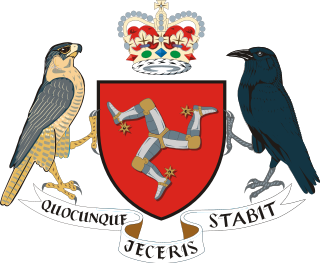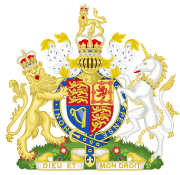
Trade secrets are a type of intellectual property that includes formulas, practices, processes, designs, instruments, patterns, or compilations of information that have inherent economic value because they are not generally known or readily ascertainable by others, and which their owner takes reasonable measures to keep secret. Intellectual property law gives the owner of a trade secret the right to restrict others from disclosing it.
Public-interest immunity (PII), previously known as Crown privilege, is a principle of English common law under which the English courts can grant a court order allowing one litigant to refrain from disclosing evidence to the other litigants where disclosure would be damaging to the public interest. This is an exception to the usual rule that all parties in litigation must disclose any evidence that is relevant to the proceedings. In making a PII order, the court has to balance the public interest in the administration of justice and the public interest in maintaining the confidentiality of certain documents whose disclosure would be damaging. PII orders have been used in criminal law against large organised criminal outfits and drug dealers where the identity of paid police informants could be at risk.
Prior art is a concept in patent law used to determine the patentability of an invention, in particular whether an invention meets the novelty and the inventive step or non-obviousness criteria for patentability. In most systems of patent law, prior art is generally defined as anything that is made available, or disclosed, to the public that might be relevant to a patent's claim before the effective filing date of a patent application for an invention. However, notable differences exist in how prior art is specifically defined under different national, regional, and international patent systems.

Patent infringement is an unauthorized act of - for example - making, using, offering for sale, selling, or importing for these purposes a patented product. Where the subject-matter of the patent is a process, infringement involves the act of using, offering for sale, selling or importing for these purposes at least the product obtained by the patented process. In other words, patent infringement is the commission of a prohibited act with respect to a patented invention without permission from the patent holder. Permission may typically be granted in the form of a license. The definition of patent infringement may vary by jurisdiction.

The Chemical Diversion and Trafficking Act of 1988 was an amendment to the Controlled Substances Act to regulate precursor chemicals, essential chemicals, tableting machines, and encapsulating machines by imposing record keeping and import/export reporting requirements on transactions involving these materials. Prior to these restrictions being put in place, the U.S. had been the primary source of chemicals used in South American cocaine manufacture. According to the DEA, the Act sharply reduced these precursor exports and cocaine manufacturers responded by purchasing from chemical suppliers outside the U.S. The U.S. in turn successfully lobbied for inclusion of chemical controls in the 1988 United Nations Convention Against Illicit Traffic in Narcotic Drugs and Psychotropic Substances, which included two Tables of controlled precursors.
The United States is considered to have the most favorable legal regime for inventors and patent owners in the world. Under United States law, a patent is a right granted to the inventor of a (1) process, machine, article of manufacture, or composition of matter, (2) that is new, useful, and non-obvious. A patent is the right to exclude others, for a limited time from profiting from a patented technology without the consent of the patent holder. Specifically, it is the right to exclude others from: making, using, selling, offering for sale, importing, inducing others to infringe, applying for an FDA approval, and/or offering a product specially adapted for practice of the patent.
Japanese patent law is based on the first-to-file principle and is mainly given force by the Patent Act of Japan. Article 2 defines an invention as "the highly advanced creation of technical ideas utilizing the law of nature".
This is a list of legal terms relating to patents and patent law. A patent is not a right to practice or use the invention claimed therein, but a territorial right to exclude others from commercially exploiting the invention, granted to an inventor or their successor in rights in exchange to a public disclosure of the invention.
Asset freezing is a form of interim or interlocutory injunction which prevents a defendant to an action from dealing with or dissipating its assets so as to frustrate a potential judgment. It is widely recognised in other common law jurisdictions and such orders can be made to have world-wide effect. It is variously construed as part of a court's inherent jurisdiction to restrain breaches of its process.

Canadian patent law is the legal system regulating the granting of patents for inventions within Canada, and the enforcement of these rights in Canada.

The Treasury of the Isle of Man is the finance department of the Isle of Man Government. It prepares the annual budget for the Government, and also handles taxation, customs and excise, economic affairs, information systems, internal audit, currency and the census in the Isle of Man.

A trademark is a type of intellectual property consisting of a recognizable sign, design, or expression that identifies a product or service from a particular source and distinguishes it from others. A trademark owner can be an individual, business organization, or any legal entity. A trademark may be located on a package, a label, a voucher, or on the product itself. Trademarks used to identify services are sometimes called service marks.

The Royal Malaysian Customs Department ; is a government department body under the Ministry of Finance. RMCD functions as the country's main indirect tax collector, facilitating trade and enforcing laws.
The Public Servants Disclosure Protection Act came into force in Canada on April 15, 2007. The Act creates two distinct processes: a disclosure process and a reprisal complaints process. It also creates two new bodies: the Office of the Public Sector Integrity Commissioner (PSIC) and the Public Servants Disclosure Protection Tribunal.
In India, a customs house agent (CHA) is licensed to act as an agent for transaction of any business relating to the entry or departure of conveyances or the import or export of goods at a customs station. CHAs maintain detailed, itemized and up-to-date accounts. A CHA license may be temporary or permanent.
A Norwich Pharmacal order is a court order for the disclosure of documents or information that is available in the United Kingdom, Ireland, and Canada. It is granted against a third party which has been mixed up in wrongdoing, forcing the disclosure of documents or information. By identifying individuals the documents and information sought are disclosed in order to assist the applicant for such an order in bringing legal proceedings against individuals who are believed to have wronged the applicant.

A patent holder in Canada has the exclusive right, privilege and liberty to making, constructing, using and selling the invention for the term of the patent, from the time the patent is granted. Any person who does any of these acts in relation to an invention without permission of the patent owner is liable for patent infringement.
Under French law, the saisie-contrefaçon is a means of proof of the infringement and, more generally, any violation of an intellectual property right. This procedure permits the holder of the intellectual property right, upon receiving the authorisation of a judge, to call upon a bailiff to record an infringement. In France, the saisie-contrefaçon is one of the most widely used means of obtaining evidence of the existence and extent of an infringement of intellectual property rights.

The following outline is provided as an overview of and topical guide to patents:

Design is a form of intellectual property right concerned with the visual appearance of articles which have commercial or industrial use. The visual form of the product is what is protected rather than the product itself. The visual features protected are the shape, configuration, pattern or ornamentation. A design infringement is where a person infringes a registered design during the period of registration. The definition of a design infringement differs in each jurisdiction but typically encompasses the purported use and make of the design, as well as if the design is imported or sold during registration. To understand if a person has infringed the monopoly of the registered design, the design is assessed under each jurisdiction's provisions. The infringement is of the visual appearance of the manufactured product rather than the function of the product, which is covered under patents. Often infringement decisions are more focused on the similarities between the two designs, rather than the differences.






